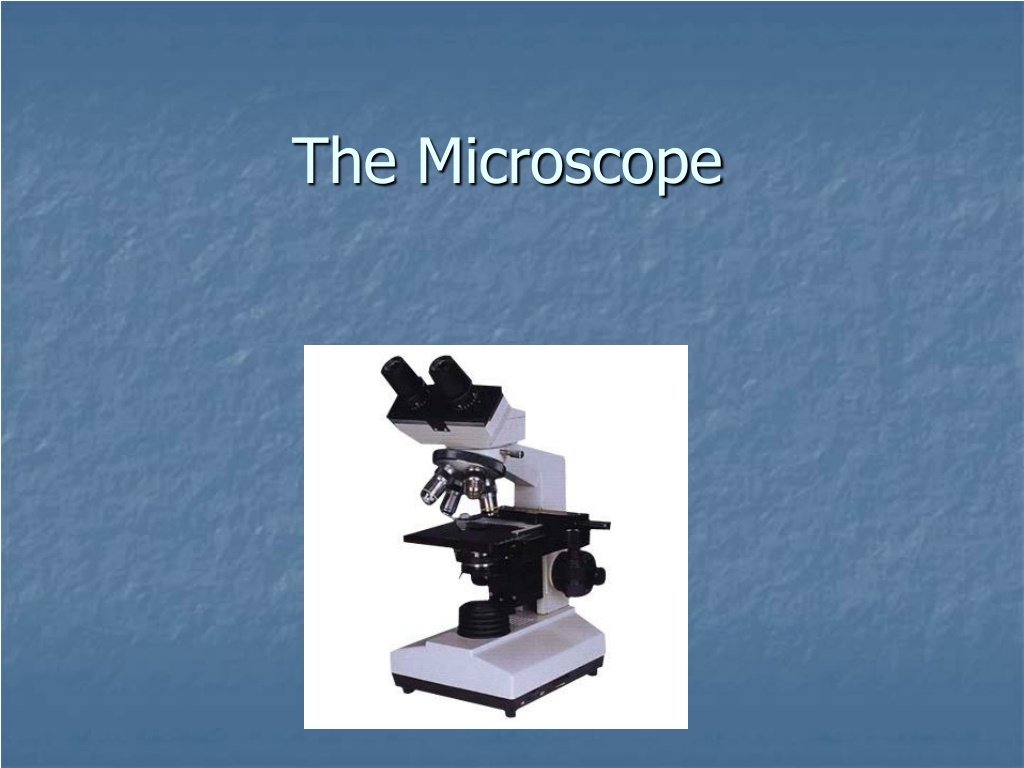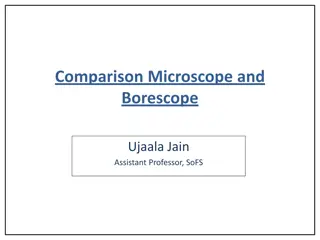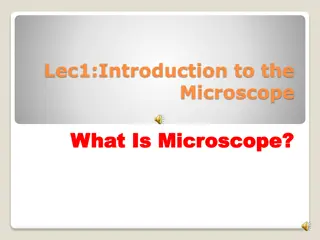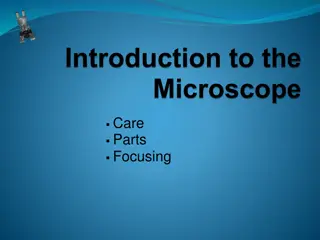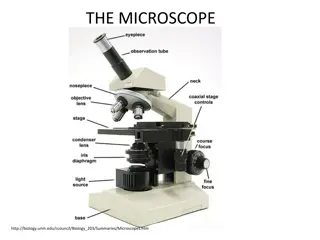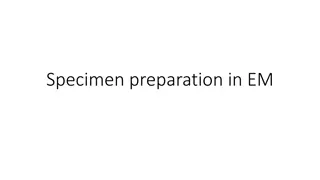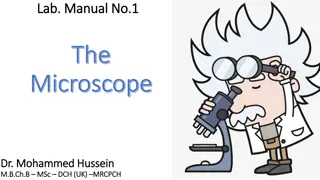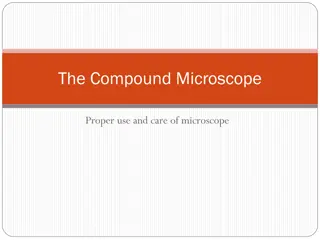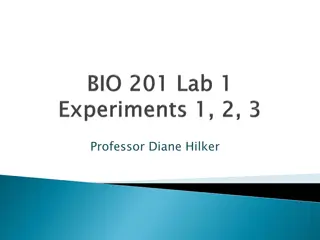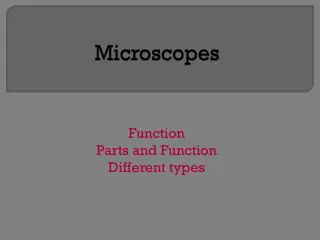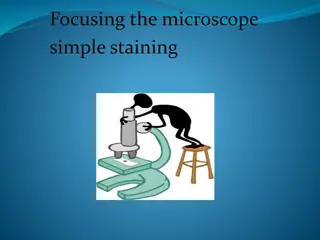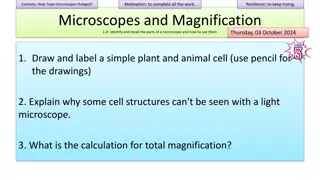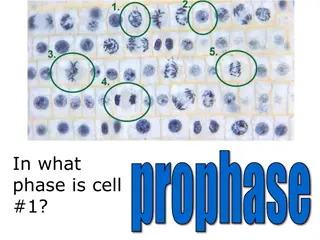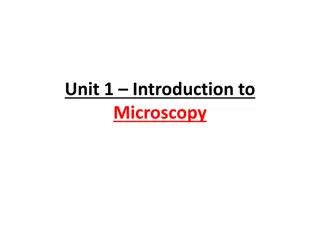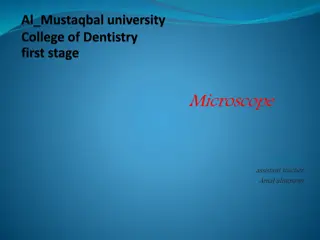Understanding the Microscope: Parts, Functions, and Usage
Explore the fascinating world of microscopes by learning about the different parts, their functions, and how to use them effectively. Discover the magnification principles, focusing techniques, and differences between light and electron microscopes. By the end, you'll be equipped with the knowledge to confidently observe biological specimens and understand the key aspects of microscopy.
Download Presentation

Please find below an Image/Link to download the presentation.
The content on the website is provided AS IS for your information and personal use only. It may not be sold, licensed, or shared on other websites without obtaining consent from the author. Download presentation by click this link. If you encounter any issues during the download, it is possible that the publisher has removed the file from their server.
E N D
Presentation Transcript
Learning Objectives By the end of this topic, you will be able to: 1. Name the parts of the microscope and their functions. 2. Use the microscope to observe biological specimens 3. Know the difference between the light microscope and the electron microscope
Compound Microscopes The microscopes used in our lab are called compound microscopes because they have two magnifying lens a. lens that you look through. b. The objective lens is the lens that is immediately above the specimen. The Eyepiece Lens is the
The Objective Lenses There are three objective lenses: - the scanning lens with the 4X label - the low power lens with the 10X label - the high power lens with the 40X label
Parts of the Microscope Part Function Lenses Stage Clips Diaphragm Coarse Focus Knob Fine Focus Knob Light Magnification To place the slide on Hold the slide in place To control the amount of light To focus the image To precisely focus the image To supply light to the object
Learning Check Label the parts of the Microscope
Magnification Magnification = the magnifying power of the eyepiece lens the magnifying power of the objective lens. x Example: Eyepiece lens = 10X Objective lens = 4X Total magnification = 10 x 4= 40X
Focussing The Image The course focus knob allows for dramatic or large movement of the objective lens. The fine focus knob allows for very slight movement of the objective lens.
The Stage and the Diaphragm The stage has two metal clips to hold the microscope slide in place. The diaphragm allows light to be focused onto the specimen through a hole in the stage.
Electron Microscope Uses Electrons instead of light Electrons have much lower wavelength than light Resolution is much better Magnification is much greater
Images from Electron Microscope Platelet Bacteria Cytplasm
Learning Check What is the function of each of these parts of the Microscope? Eyepiece Lens Stage Diaphragm Fine focus Knob Objective Lens Clips Coarse Focus Knob Light
What have you learned? Can you? 1. Name the parts of the microscope and their functions. 2. Use the microscope to observe biological specimens 3. Outline the differences between the light microscope and the electron microscope
